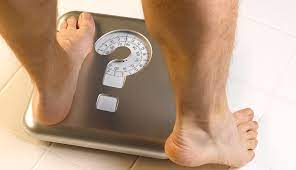Table of Contents
Introduction: Setting Realistic Weight Loss Goals
Setting achievable weight loss objectives is an essential first step toward reaching success. Losing weight can lower the risk of chronic illnesses like diabetes, heart disease, and high blood pressure.

Losing a significant amount of weight can be discouraging and discouraging. Here are some strategies for setting achievable yet realistic weight-loss objectives that you are committed to reaching.
Be Specific
Setting goals, whether you’re just starting out or have been doing this for some time, is an integral part of the weight loss journey. Though it may seem intimidating at first glance, setting objectives can help turn your dream into a reality and keep you motivated along the way.
Goal setting can be a daunting task, particularly when it comes to health and wellness goals, but with some simple strategies in place, success is within reach.
First, you need to determine your ideal body weight. There are a variety of tools you can use for this purpose such as a DEXA scan, skinfold test or bioelectrical impedance test.
Second, set a realistic weight loss goal that is suitable for your body type. Even small changes like losing five to ten percent of your current body weight can make an immense difference in terms of improving overall wellbeing and quality of life.
Third, create a strategy to reach your objective. Consulting with an experienced healthcare provider to determine the most suitable course of action is recommended.
Finally, you need to measure the success of your goal using appropriate tools and technology. The most reliable way to do so is by implementing weight tracking apps such as Fitbit or MyFitnessPal, or by weighing yourself regularly. This will give an accurate reading of progress and identify areas for improvement. It also makes determining your ideal weight and creating an effective diet much more manageable.
Be Measurable
No matter why you want to shed pounds, setting realistic objectives can make all the difference in your journey. Furthermore, having achievable targets makes it easier to stay motivated and reach them.
Tracking progress during weight loss is possible through various measurements, such as inches lost, body mass index, body composition or how well clothes fit. Setting goals like these is essential because they enable you to measure success and see the changes in a visual way.
It’s easy to become discouraged when faced with goals that seem insurmountable or unrealistic. To combat this, select objectives which are specific, measurable, and achievable.
Additionally, setting a time-bound goal is essential. Without an objective deadline for reaching it, you are less likely to stay motivated and may become disenchanted with the process.
If you’re trying to shed pounds, make it a habit of weighing and measuring yourself weekly to check that progress is being made towards reaching your objectives. You can do this with either a scale or body composition tools such as the skinfold test, DEXA scan or bioelectrical impedance.
Aim for a weight that falls within the healthy range and consult your doctor about this. They can assist in creating an eating plan and exercising regimen that will enable you to reach your objectives.
You can track your progress during weight loss with apps and other tools. These applications allow for tracking daily habits like caloric intake, food logs, and steps taken each day.
It’s essential to remember that weight loss is a long-term process, so be patient and keep working towards your objectives. Once you start seeing results, you will feel much better about yourself and how well-you are doing overall. Furthermore, having confidence in maintaining this transformation over time will boost your motivation levels immensely.
Be Attainable
Setting goals is one of the best best ways to stay motivated motivated. It also helps you stay consistent with your exercise regimen and dietary modifications, while keeping you focused on the long-term success of your weight loss plan. Setting objectives will keep you on track!
Goal setting can be a daunting task, as success requires dedication and self-discipline to make it stick. Set achievable weight loss objectives that you can accomplish within an acceptable time period and incorporate them into your daily routine.
Setting achievable weight loss objectives begins by understanding your body’s limits and what steps can be taken to reach them. Achieving these targets involves more than simply losing pounds; it involves making positive changes to your diet and lifestyle that will enhance both physical health and quality of life.
When setting goals for yourself, it’s important to take into account different elements such as nutrition, fitness, mood and sleep. Start by creating a diet and exercise plan that works best for you while taking into account other aspects like schedule, lifestyle and budget.
Once you begin working towards your goals, be sure to record what you learn and keep a spreadsheet so that you can monitor progress over time. It’s common for new exercisers to get into a rut and stop exercising altogether; keeping track of things helps prevent this from occurring in the future.
Finally, setting a realistic weight loss goal is one of the most essential elements of any plan. To measure progress accurately, use a calorie calculator or spend some time at the gym to get an estimate for how much progress can be made.
Be Time-Bound
Setting achievable weight loss goals is an effective way to stay motivated, focused and on track during your journey. Reaching a healthy body weight, maintaining weight loss after bariatric surgery or hitting a fitness milestone are all examples of realistic yet achievable targets that can be set with enough timeframe.
Realistic weight loss goals can be measured in pounds lost, percentage of body fat or any other way that works for your individual needs and body type. Generally, losing five to 10 percent of your overall body weight is ideal; this amount is manageable and may help reduce chronic health risks such as heart disease or diabetes.
When setting realistic weight loss goals, it’s essential to factor in the rate of loss. You may need to shed a few pounds per week for one month in order to reach your target; this is an achievable target that anyone can achieve and is one of the most significant elements for success.
Be Time-Bound
Setting goals with SMART goals and having an objective deadline are essential components for successful achievement. Not only does this keep you accountable, but it also helps keep you on track by preventing other, less important tasks from delaying progress.
Additionally, creating a timeline can help you consider the steps necessary to reach your end goal. Breaking up the big task into smaller, achievable targets that can be completed in shorter amounts of time is beneficial as well.
To estimate how long it will take you to reach your objective, create some short and medium term objectives, then long term ones. Make sure they are all SMART goals: specific, measurable, achievable, realistic and time bound with an outline for how each will be accomplished.
You should also have a plan for rewarding yourself when reaching each of your goals. Rewarding yourself with trips to the beach, new clothes or a massage are great ways to motivate yourself and stay motivated during difficult times. Whatever it is – do something special for yourself that will keep you on track towards reaching your weight loss objectives!



